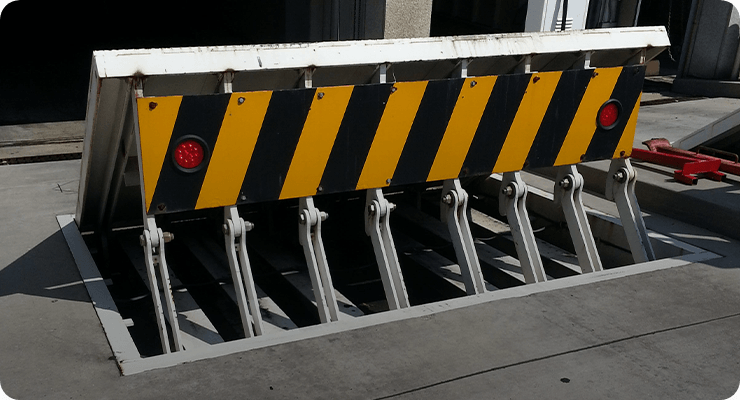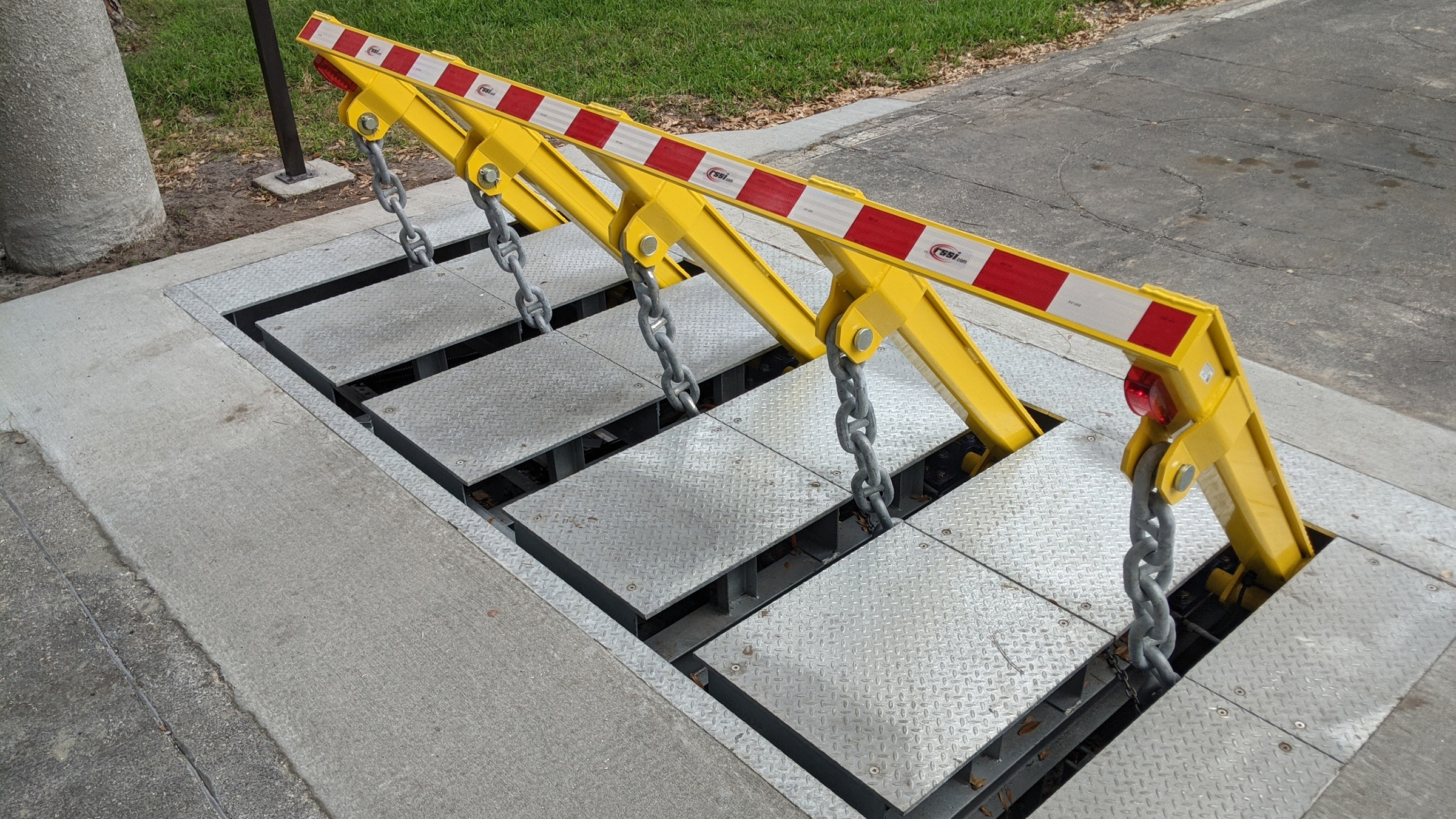Unknown Facts About Wedge Barriers
The 7-Minute Rule for Wedge Barriers

Facts About Wedge Barriers Uncovered
The remaining force applied to
the cam web cam deploy the wedge plate 16 may be provided supplied an electromechanical actuator 84 or other various other. The springtime setting up 54 and the actuator 84(e. Wedge Barriers. g., electromechanical actuator)may run with each other to convert the webcam and raise the wedge plate 16.
As discussed over, the springtime setting up 54 puts in a consistent force on the web cam, while the electromechanical actuator may be controlled to put in a variable pressure on the web cam, consequently enabling the training and lowering( i. e., releasing and retracting )of the wedge plate 16. In certain personifications, the constant force used by the springtime assembly 54 might be flexible. g., electromechanical actuator) is impaired. As will certainly be valued, the springtime assembly 54 might be covered and safeguarded from debris or various other components by a cover plate(e. g., cover plate 68 displayed in FIG. 4) that may be significantly flush with the elevated surface 38 of the foundation 14. As discussed above, in the released placement, the wedge plate 16 serves to obstruct access or traveling past the obstacle 10. The barrier 10(e. g., the wedge plate 16 )might block pedestrians or vehicles from accessing a home or pathway. As discussed over, the obstacle 10 is connected to the anchor 30 safeguarded within the structure 14,

front braces 71. As an outcome, the affiliation settings up 72 might pivot and revolve to make it possible for the collapse and expansion of the affiliation settings up 72 throughout retraction and release of the bather 10. The affiliation settings up 72 reason activity of the wedge plate 16 to be limited. If a vehicle is taking a trip in the direction of the released wedge plate 16(e. For example, in one scenario, the safety and security legs 86 might be expanded throughoutmaintenance of the barrier 10. When the safety legs 86 are deployed, the safety legs 86 support the weight of the wedge plate 16 against the surface area 12. Therefore, the training system 50 may be deactivated, serviced, removed, changed, etc. FIG. 5 is partial perspective view of a personification of see this here the surface-mounted wedge-style obstacle 10, showing the cam 80 and the cam surface areas 82 of the lifting mechanism 50. Especially, 2 webcam surfaces 82, which are described as lower camera surface areas 83, are positioned listed below the camera 80. The lower web cam surface areas 83 may be dealt with to the surface area 12 (e. For example, the reduced webcam surface areas 83 and the installing plate 85 may create a single item that is protected to the anchor 30 by screws or other mechanical bolts. Additionally, 2 webcam surfaces 82, which are described as top cam surface areas 87, are positioned over the webcam 80 and paired to (e. In various other embodiments, intervening layers or plates may be placed between the surface area 12 and the lower web cam surfaces 83 and/or the wedge plate 16 and the top webcam surfaces 87 As mentioned over, the cam
80 equates along the cam surface areas 82 when the wedge plate 16 is raised from the pulled back placement to the deployed setting. Additionally, as pointed out over, the spring setting up 54 (see FIG. 3 )might offer a pressure acting on the webcam 80 in the instructions 102 via spring pole 58, which might decrease the pressure the electromechanical actuator 84 is called for to put on the camera 80 in order to activate and lift the wedge plate 16. 1 )to the deployed placement(see FIG. 4). you can try here As revealed, the cam click for source 80 includes track wheels 104(e. g., rollers), which get in touch with and convert along the webcam surfaces 82 throughout procedure.